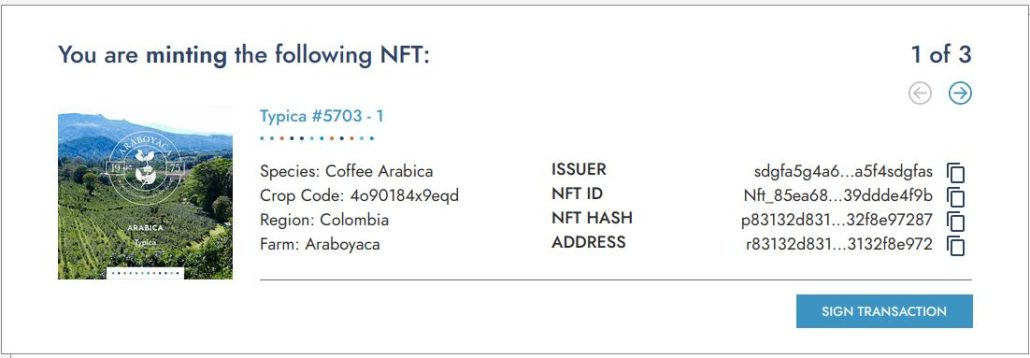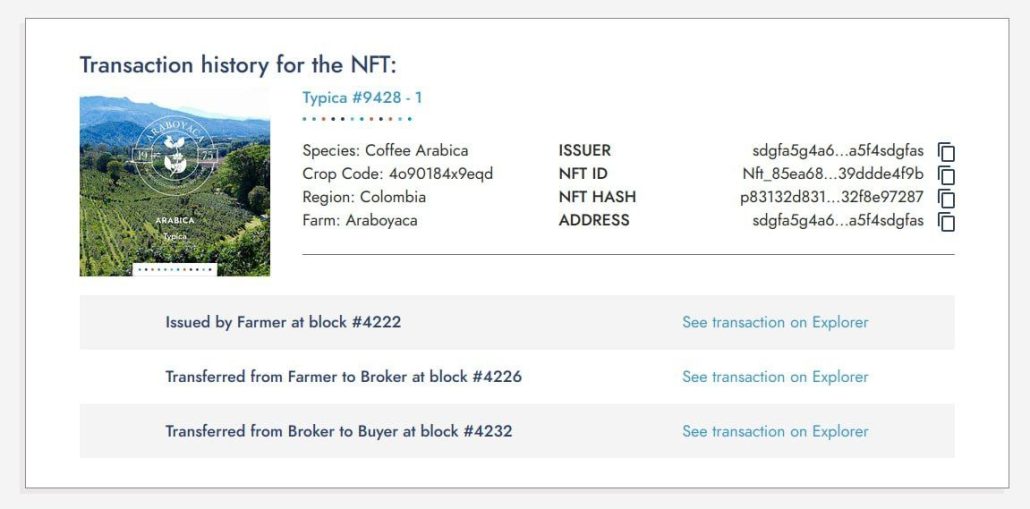By: Geeq on Dec 20, 2023
A Geeq NFT mint account allows a user to issue, create, or mint a unique token (NFT) as an asset on-chain. The action of minting is standardized at Geeq. Smart contracts are not used.
Exactly one user’s public-private key (PPK) pair is authorized to mint, per account. Like the signature of an artist on a physical painting or an employer’s id on a year-end tax form, the PPK identifies the authenticity of the issuing (minting) account.
In each case, the NFT mint account has one job: it mints. Unlike asset accounts, a mint account does not contain, collect, keep, or own assets. Thus, a mint transaction specifies a receiving account by its ADDRESS. Ownership of the NFT asset is delivered directly to the designated receiving Geeq asset account.
The convenience of a Geeq NFT, the value of provable provenance
Note the ISSUER of the NFT displayed below. This is the public key of the mint account. It also establishes the provenance, or original issuer of the NFT.

Here, the NFT represents a particular crop on-chain, issued by a farmer’s unique minting account.
Organize your minted editions as you wish:
Transactions to mint NFTs from a minter’s account are valid if and only if the minter uses the correct private key to SIGN TRANSACTION, depicted above. The signature provides provable authenticity. It also freezes the minted NFT’s attributes for all time.
In the future, anyone may create as many mint accounts as they like, each with its own PPK. Users have full control over how they organize which account mints what. Geeq’s NFT mint accounts may be used to separate collections and minting authorities. They also have the benefit of being able to mint immediately, without deploying a new smart contract.
As enterprises turn toward NFTs to mint thousands of real world assets on-chain, separate mint accounts is an intuitive way to delegate authority and track assets. Some mints may operate quarterly, others daily; some used for commodities, others for finished goods, etc. The possibilities are endless, yet the process is easily understood, transparent, and exactly the same.
Geeq’s hallmark security and stateless proofs distinguish it from all smart contract platforms. Smart contracts may be exploitable; need to be rewritten or suspended; change standards depending on the fashion of the time; and differ across platforms. Geeq’s methods are enduring, apply to all Geeq blockchains, and are future-proof.
Secure on-chain transfers – tracing changes in ownership:
As the NFT is transferred from owner to owner, the ISSUER or provenance is retained, whereas the chain of custody or audit trail becomes easily searchable by the NFT ID via (1) a centralized or decentralized block explorer app or (2) ingesting and integrating the blockchain data with your own data sets to use your typical query methods.

A transaction history for NFT ID Nft_85…49b is displayed above. This is one display of any possible block explorer app you care to design. The record for the NFT contains the user-provided metadata (displayed on the left) with the blockchain data for the NFT (on the right). Every element is searchable, and the history of recorded ownership and on-chain transfers is shown on the bottom.
Geeq NFTs are tailor-made to prove provenance and data lineage for use cases such as supply chain, ownership and transfers of assets, chain-of-custody and attribution of liability.
The security of your chain-of-custody is only as strong as the weakest link. At Geeq, there are no weak links. If you value security, Geeq has patented the most secure protocol for blockchains, public or private.
The advantage of Geeq’s blockchains when humans make mistakes:
While the Geeq protocol processes each mint request in the same, secure way, there is one potential flaw in this plan: human error may result in a shared or stolen key. This is the blockchain equivalent to sharing a password or having your credentials stolen.
Mitigation is similar to what you would have to do with an internal password error except it is much faster to address. Containment is built-in. A compromised mint account does not affect existing assets in any asset account, which is a must-have for any business use.
Further, a compromised key to an account on a blockchain occurs outside of your internal SaaS environment: permissions may be given to do external work without the opportunity for a compromised account to get into portions of your centralized databases.
How to mitigate the problem of a compromised key:
The first action to take is out-of-protocol and in the real world. Quite simply, issue an announcement or communicate with your clients the account has been compromised and warn them every NFT minted after your security breach is a counterfeit. All NFTs issued from the mint account prior to the custody issue remains provably authentic. Inform them of your new public key to an authorized mint and carry on. The functionality of the blockchain is intact and immediately available. In particular, you will not need to deploy a new smart contract or worry about the old one and its knock-on effects.
The second action is to make a declaration on-chain. As the cherry on top, any attestation you make on a Geeq chain is immediately provable. See for yourself how easy it is by trying Geeq Data.
Geeq blockchains are a well-organized back end to any app. Both NFTs and attestations are equipped with metadata fields and the appropriate strict validation requirements for their transaction types.
Private blockchains released for verson 1 of Geeq’s commercial 2-in-1 will include white-label NFT mints and notary transactions, for enterprises to use to complement their existing workflows.
Summary:
The combination of Geeq’s industry-leading security, standardized NFT mints, easily searchable databases, and contemporaneous proofs provide all the tools necessary to tokenize any unique object on-chain.
Geeq NFT mints are data-agnostic. The original object to be tokenized may be any type of digital file, including formats such as video, audio, or image. The digital file itself may be a legal document, such as a deed to a specific piece of property, or an identifier that represents a unique physical object, such as a piece of machinery or an electronic device sold to a customer.
Geeq scales by replicating its protocol for each chain. Adopt one or many. Let us know if you have questions by joining our community and following us @GeeqOfficial.






To learn more about Geeq, follow us and join the conversation.
@GeeqOfficial